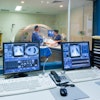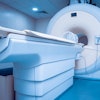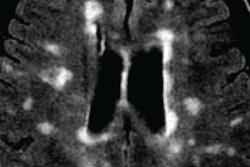Dear AuntMinnie Member,
European regulators on Friday dropped a bombshell on radiology with a recommendation that the market approvals for four widely used gadolinium-based contrast agents (GBCAs) be rescinded.
The news came at the conclusion of a review by the European Medicine Agency's Pharmacovigilance Risk Assessment Committee (PRAC), which had been studying the safety of gadolinium agents in the wake of findings that gadolinium persisted in the brains of patients who had received MRI scans -- years after the studies took place.
While the PRAC acknowledged that so far there has been no evidence that gadolinium deposition in the brain leads to any clinical symptoms or disease, it said it was making the recommendation as a "precautionary approach," especially given that gadolinium deposition in the past has been associated with devastating diseases such as nephrogenic systemic fibrosis in patients with impaired kidney function.
The PRAC's recommendation only applies to four gadolinium products, all of which are called linear agents due to their chemical composition. Another class of gadolinium agents, macrocyclic agents, is not covered by the recommendation, as research has indicated that these agents are far less likely to lead to residual gadolinium.
The question is, what happens now? One company that markets both linear and macrocyclic gadolinium products has already said that it supports the move, while other companies have expressed disappointment. The PRAC will accept comments from companies and other interested parties before it renders its final decision.
Another issue is whether the U.S. Food and Drug Administration will take a similar tack with its own review of gadolinium, which is still underway. The changed regulatory environment in Washington, DC, would seem to make such a move unlikely, but what eventually happens is anybody's guess.
Get up to speed on the news by clicking here, or visit our MRI Community at mri.auntminnie.com.
Elastography of cervical lymph nodes
In the realm of ultrasound, new research from China indicates that using ultrasound shear-wave elastography can help differentiate between metastatic and nonmetastatic cervical lymph nodes, performing better than conventional ultrasound. Learn more by clicking here.
Better tweeting
Finally, if you're looking for a way to improve your facility's social media activity, be sure to check out this article on how a radiology journal bumped up the number of hits it received when using Twitter.


.fFmgij6Hin.png?auto=compress%2Cformat&fit=crop&h=100&q=70&w=100)





.fFmgij6Hin.png?auto=compress%2Cformat&fit=crop&h=167&q=70&w=250)











